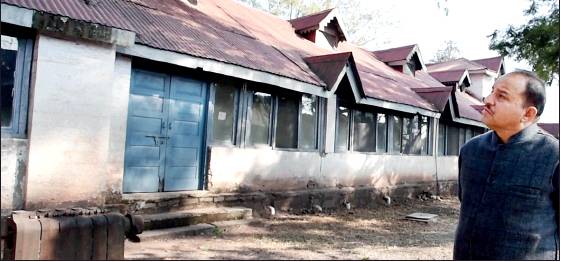Dharampur, HP
This is a collection of articles archived for the excellence of their content. |
TB sanatorium

From: Shimona Kanwar, How TB patients left to die found new life in this town, December 29, 2018: The Times of India
Dharampur In Himachal Provided Cure And A Home At A Time More Than A Century Back When Great Stigma Was Attached To The Disease
Gurbachan Singh Sethi, 68, owns a hotel and homestay in Dharampur, a small town on National Highway 22 near Kasauli in Solan district of Himachal Pradesh. He is a prominent citizen, well-known in these parts. But what connects him with most of the local residents is also what makes the town so remarkable: most of its people are descendants of patients who had come to the 107-yearold tuberculosis sanatorium here generations ago.
After they were cured at the sanatorium, the patients used to be given parcels of land in the vicinity by the British government so that they could do something for themselves. This was because families would often not take back those afflicted with the disease even after their full recovery. The stigma around it in those days was just too severe. Over the decades though these patients prospered, forging a life at a time when the very mention of TB led to social ostracism.
“An ancestor of mine was from Mangwal village in Jhelum district of what became Pakistan. Sometime after Partition, he came to the sanatorium for treatment. They settled here permanently and we have been here ever since,” Sethi said.
“Dharampur has a population of close to 10,000 today. Almost 90% of them are descended from the patients back then,” said Om Prakash Pawar, president of Dharampur gram panchayat.
The sanatorium was inaugurated by Viceroy Lord Charles Hardinge on October 3, 1911. What began with 100 beds is now a proper TB hospital and has seen much change over the years. The roof of the main complex was 20ft high. The heating system was designed such that the warm air would kill the TB bacteria inside the wards. One can see the divide between the rich and the poor as well — there were cottages for the rich and the poor were admitted to the wards.
“The first patient was one A Lala from Lahore, who was admitted in 1911. He recovered after natural treatment and went on to graduate in law,” said Dr Satish Pundir, an epidemiologist at the hospital. “The patients who recovered and built their lives again in Dharampur set up timber and other businesses,” he added.
“Till 1909, patients were kept in open tents. There were seven sanatoriums in Dharampur at one point a century ago, but now there is only one complex. The others have been converted into CRPF camps and the Central Research Institute (CRI), Kasauli,” said Kuldeep Kanwar, senior lab technician at the hospital. CRI is today a well-known centre for research into vaccines.
“During the Raj, the Maharaja of Patiala used to support this hospital. No TB patient could freely roam in the town. If they did, there was a small town committee that included doctors who used to identify them and take them back to the sanatorium,” Sethi said. The presence of so many patients eventually led to it being called ‘TB town’, with all the stigma attached.
“I remember decades ago, when I was a child, whenever any bus or train used to pass this town, the conductor used to ask passengers to pull down the shutters as it was thought the very air of the place had TB bacteria,” said Sushil Sharma, vice-president of the Dharampur gram panchayat.
Patients used to come to Dharampur from across the country and even abroad. “They would be screened by a committee and only those at the initial stage of the disease were selected for stay,” said Dr Anita Mahajan, medical superintendent at the hospital.
In 1997, the Revised National TB Control Programme was implemented and it brought the treatment almost to the doorsteps of patients. Patients in the sanatorium now number no more than 25 at a given time. However, the disease remains a challenge for health workers as the stigma continues. “Some of the patients were brought into the hospital in the boot space of cars,” said Kanwar.
Some of the patients at the hospital today have multidrug resistant TB (MDR-TB) and most of them have been seemingly dumped by their families. “I have been here for a year now with the hope that my son will come to take me back. The doctors say I am improving. I have not seen my grandkids ever since the time I contracted this disease,” said a patient.
The hospital is now a state TB training and demonstration centre. It is the only TB hospital in Himachal that has an intermediate reference laboratory with state-of-the-art machines to detect MDR- TB. “This facility has increased our cure rate from 40% to 70%. Recovery is also attributed to the clean air and good sunlight in this area,” said Mahajan.